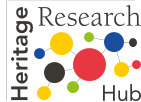Project facts
Presentation
Main project objective
STORM provides critical decision making tools to all European Cultural Heritage stakeholders charged to face climate change and natural hazards. The project improves existing processes related to three identifed areas: Prevention, Intervention and Policies, planning and processes.
Prevention
Objective 1. Select, evolve and integrate innovative environnement assessment methodologies to effectively and accurately process, analyse and map environmental changes and/or natural hazards.
Objective 2. Define and implement an innovative supporting service for the mitigiation of natural hazards and climate change, and the assessment / management of corresponding threats while minimizing their impact.
Intervention
Objective 3. Provide innovative, cost effective, non-invasive and non-destructive methods and processes, as well as applications for survey and diagnosis based on the study of materials properties, particular environmental conditions, and profile of the cultural assets to be assessed.
Objective 4. Define and implement models and services for generating and managing situational picture based on the data/information collected from the field by physical and human sensors and evaluators, the so called “crowdsensing”.
Objective 5. Provide innovative practices, software and tools for more reliable maintenance, quick restauration and long-term conservation of the Cultural Heritage assets, preserving their historic and cultural integrity.
Objective 6. Define a collaboration and knwoledge-sharing framework for the community of stakeholders to co-create, share and maintain improved practices, knowledge and experience on cost-effective and eco-innovative solutions for sustainable management and conservation of Cultural Heritage in Europe.
Policies, planning and processes
Objective 7. Propose adaptations, changes in existing policies and validation of new knowledge in government processes.
Objective 8. Cost analysis for the sites protection against natural hazards by the STORM data analytic tools.
Impacts & Results
In a context of climate change and increase in natural hazards, it is more than ever urgent to put prevention into practice, in order to preserve the European cultural heritage.
STORM wants to provide concrete solutions to this preservation problematic. It is notably based on valuable information regarding prevention gathered during previous projects, and seeks to create practical tools to safeguard Europe’s cultural heritage. These processes are user-focused and citizen-centred, allowing greater awareness about protection and prevention.
Five pilot sites are still being tested in Italy, Greece, the UK, Portugal and Turkey. The Project Coordinator, Dr. Boi states that study cases’ results will provide a consistent set of guidelines, best practices and lessons learned about STORM technologies.
“The project started with the great ambition of building a common motivation framework among a wide group of varied competences,” affirms Dr. Boi. “After the first period of STORM, we know that the methodology could work and now it is time to apply it in the field.”

